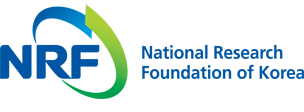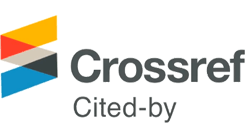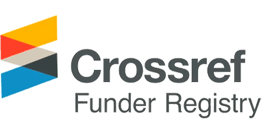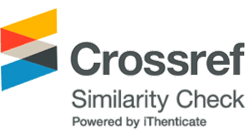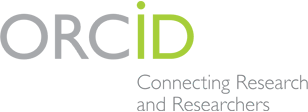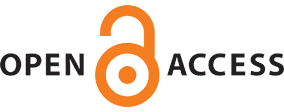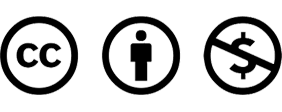Instructions for Authors
Instruction for Author(Enacted in 2001, most recently revised in June 2013 and September 2021)
Instructions for Authors
Table of contents
2. Copyright and Creative Commons Attribution License
3. Research and Publication Ethics
4. Author Qualifications and Language Requirement
5. Submission and Peer Review Process
6. Guideline for Manuscript Preparation
7. Final preparation for Publication
1. General Information
The Journal of implantology and applied sciences (J Implantol Appl Sci) is the official journal of the Korean Academy of Oral & Maxillofacial Implantology (KAOMI). The authors who plan to submit a manuscript are advised to read this journal’s aims and scope section carefully. The authors must adhere to the following guidelines, which are provided to ensure the expeditious processing of manuscripts. Failure to follow these guidelines can delay the review process and publication or possibly rejection.
2. Copyright and Creative Commons Attribution License
A submitted manuscript, when published, will become the property of the journal. KAOMI owns copyrights of all published materials. The Creative Commons Attribution License available from: http://creativecommons.org/licenses/by/4.0/ is also in effect.
3. Research and Publication Ethics
The Journal of implantology and applied sciences follows the “Recommendations for the Conduct, Reporting, Editing and Publication of Scholarly Work in Medical Journals” (http://www.icmje.org/icmje-recommendations.pdf) from International Committee of Medical Journal Editors (ICMJE). For the issues not stated in these instructions, the authors can refer to the Principles of Transparency and Best Practice in Scholarly Publishing (joint statement by COPE, DOAJ, WAME, and OASPA; http://doaj.org/bestpractice).
A. Purpose
This code of research and publication ethics (hereinafter abbreviated as Code of Ethics) is based on the KAOMI regulations. Its purpose is to prescribe ethical principles and standards.
∙ Researchers prepare necessary policies to effectively deal with issues related to bioethics and safety that may arise in the development and use of dentistry and life science technology.
∙ Researchers, clinicians, developers shall ensure that life science and technology do not infringe on human dignity and value and conform to bioethics and safety.
B. Authorship and Contributorship
The Journal of implantology and applied sciences defines an “author” as a person whose participation in the work is sufficient for taking public responsibility for all portions of the content. Specifically, all authors should have made substantial contributions to all of the following:
∙ Conception and design of the study, acquisition of the data, or analysis and interpretation of the data
∙ Drafting of the article or revisioning it critically for important intellectual content
∙ Final approval of the version to be submitted
∙ Agreement to be accountable for all aspects of the work in ensuring that questions related to the accuracy or integrity of any part of the work are appropriately investigated and resolved.
Authors should meet all of these four conditions. When authorship is attributed to a group, all authors must meet the listed criteria and be responsible for the work’s quality, accuracy, and ethics. All authors must participate in determining the order of authorship. Science Editing does not allow multiple corresponding authors for one article.
C. Co-author with a Special Relationship
1) If the co-author of the submitted manuscript is a minor or has a special relationship with a relative within the fourth cousin, such as a spouse or child, the manuscript cannot be submitted. However, an exception is made in cases where a person has a doctoral degree in the same or similar field to the submitted manuscript and has given prior consent to the provision of personal information.
2) For further information, the 「Recommendations for preventing unfair authorship of research papers」 (revised on April 10, 2020) shall comply.
D. Originality, Plagiarism, and Duplicate Publication
Submitted manuscripts must not have been previously published or be under consideration for publication elsewhere. Submitted manuscripts are screened for possible plagiarism or duplicate publication by Similarity Check upon arrival. Any manuscript with similar or near similar hypothesis, sample characteristics, methodology, results, and conclusions to a published article is a duplicate article and prohibited. There will be penalties for the authors. A letter of permission is required for all material that has been published previously. It is the author’s responsibility to request permission from the publisher for any material (text, figure, and table) that is being reproduced.
E. Secondary Publication
It is possible to republish manuscripts if it satisfies the condition of secondary publication of the “Uniform Requirements for Manuscripts Submitted to Biomedical Journals: Writing and Editing for Biomedical Publication” (http://www.icmje.org) updated October 2008.
F. Author Disclosure of Conflict of Interest
Each author must disclose all potential conflicts of interest (COI) by completing Journal of implantology and applied sciences COI disclosure form. A COI is a financial relationship or another set of circumstances that may affect or may reasonably be thought by others to affect an author’s judgment, conduct, or manuscript. A COI exists based on the author’s circumstances; the author’s behavior, subjective beliefs, and outcomes are irrelevant. In other words, the author must disclose a COI even when the circumstances have not influenced the author’s actions or manuscript. Moreover, even when the author believes that the circumstances cannot affect the actions or manuscript. When a manuscript is accepted for publication, Editorial Board will determine the parts of an author’s disclosure published with the manuscript.
G. Source of Funding
All sources of funding applicable to the study should be explicitly stated. In the case of a paper prepared with the support of research funds, the content shall be written in the acknowledgment section.
H. Copyright
The copyright of any paper published in this journal shall be held by the KAOMI. By submitting an application for manuscript publication signed to agree to the regulations for contribution, the copyright of the paper comes under the ownership of the KAOMI. Suppose papers closely related to the submitted manuscript have been published or submitted for publication elsewhere. In that case, the author must state this in the cover letter.
I. Statement of the Use of Sex and Gender
Ensure correct use of the terms sex (when reporting biological factors) and gender (identity, psychosocial or cultural factors). Moreover, unless inappropriate, report the sex and/or gender of study participants, the sex of animals or cells, and describe the methods used to determine sex and gender. Suppose the study involved an entire population, for example, in only cases (e.g., prostate cancer). In that case, authors should define how they determined race and ethnicity and justify their relevance.
J. Statement of Human and Animal Right
Studies on human beings must comply with the Principles for Medical Research Involving Human Subjects based on the Declaration of Helsinki and its recommendations guiding physicians in biomedical research involving human subjects (adopted at Helsinki (1964) and amended by the 29th, 35th, 41st, 52nd, 53rd, 55th, 59th, and 64th World Medical Association General Assembly (recently at Fortaleza, 2013). It is available from: https://www.wma.net/policies-post/wma-declaration-of-helsinki-ethical-principles-for-medical-research-involving-human-subjects/. Human studies that do not meet the Helsinki Declaration will not be considered for publication. Authors should conduct a study based on the National or Institutional Guide for the Care and Use of Laboratory Animals for animal subjects.
K. Statement of Informed Consent and Institutional Review Board Approval
To satisfy this requirement, authors must get informed consent from the study participants. An IRB must have approved study protocols for clinical studies. Authors must state that they have received an IRB approval or a statement from the committee that IRB approval was unnecessary.
L. Registration of Clinical Trials
Any research that deals with a clinical trial should be registered with a primary national clinical trial registration site such as https://cris.nih.go.kr/, or other sites accredited by the WHO or the ICMJE.
M. Advertising Policy
Advertisements may promote information and technologies relevant to authors, editors, reviewers, and readers. Any individuals or organizations interested in advertising their products or services in the print copies of the journal are encouraged to contact the editorial office. The editorial board will discuss the acceptance of advertisements; ultimate approval resides with the publisher.
N. Research Ethics Council
∙ Composition and Resolution: The research ethics council consists of 5 or more members. The Editor-in-Chief appoints the members with the recommendation of the Editorial Board. The research ethics council has one chairperson, and the chairperson is elected. The research ethics council decides with the consent of two-thirds of the total members.
∙ Council’s Authority: The research ethics council conducts investigations on cases reported as violations of the Code of Ethics through the reporter, examinee, witness, referee, and evidence materials and reports the results to the Editor-in-Chief. Suppose the violation of originality, plagiarism, and duplicate publication is determined to be true. In that case, the chairperson may recommend appropriate sanctions to the president.
∙ Investigation and Deliberation: The authors reported to have violated the Code of Ethics shall cooperate with the investigation conducted by the research ethics council. Failure to cooperate with this investigation is itself a violation of the Code of Ethics.
∙ Guarantee of Opportunity to Explain: The research ethics council shall give the authors who have been reported as violating the Code of Ethics a sufficient opportunity to explain.
∙ Procedures of Sanctions for Violations of the Code of Ethics: When there is a report or suggestion of sanctions by the research ethics council on the authors, the Editor-in-Chief must convene the Editorial Board. Moreover, follow-up measures such as the content of sanctions should be decided. Suppose the Editorial Board decides to sanction authors who violate the rules. In that case, the following sanctions may be imposed according to the severity of the violation.
- If the manuscript has not been published before being published in the journal, its publication is not permitted.
- If the manuscript has been published in the journal, retroactive invalidation of the article’s publication is conducted.
- Prohibition of publication of papers in the journal for the next three years
Suppose the Editorial Board decides to ban the retrospective nullification of the publication. In that case, the fact is notified to the official research achievement management organization and publicly announced through other appropriate methods. Suppose the Editorial Board decides not to impose sanctions. In that case, it must notify the research ethics council, the reporter, and the respondent without delay. Suppose it is decided to sanction the author and the violation is severe. In that case, the editorial committee may decide the content of the disciplinary action and propose it to the academy general meeting. Disciplinary procedures after disciplinary action follow the KAOMI regulations.
O. Process for Managing Publication Misconduct
When the Editorial Board encounters the suspected cases of publication misconduct such as duplicate publication, plagiarism, fraudulent data, undisclosed conflict of interest, changes in authorship, a reviewer who has appropriated an author’s idea or data, and any complaints, the resolution process will follow the flowchart provided by the Committee on Publication Ethics (COPE) (http://publicationethics.org/resources/flowcharts). The Editorial Board carries out the discussion and decision on the suspected cases.
P. Editorial Responsibilities
The Editorial Board will continuously monitor the publication ethics:
∙ guidelines for retracting articles
∙ maintenance of the integrity of the academic record
∙ publishing corrections, clarifications, retractions, and apologies when needed
∙ excluding plagiarism and fraudulent data
The editors maintain the following responsibilities: responsibility and authority to reject and accept articles; avoiding any conflict of interest; promoting the publication of corrections or retractions when errors are found; and preservation of the anonymity of reviewers.
4. Author Qualifications and Language Requirement
A. Qualification for Contribution
Any researcher, clinician, and other persons recognized by the Editorial Board throughout the world can submit a manuscript if the scope of the manuscript is appropriate.
B. Language
Manuscripts should be submitted in good scientific English. All manuscripts must be written in proper and clear American English. Manuscripts that are not written in fluent English will be rejected without referring.
5. Submission and Peer Review Process
A. Submission
Submissions to The Journal of implantology and applied sciences should be made electronically via the online manuscript submission and review system: http://submission.implantology.or.kr (E-mail submissions will not be accepted).
∙ The original files containing the text, photos, figures should be uploaded to the online manuscript submission and review system.
∙ The editorial office may request the authors supply the original photos and figures after the assessment process. The authors should respond to such requests.
B. Peer Review Process
The editor-in-chief first reviews a manuscript for its format and adherence to the aims and scope of the journal. If the manuscript meets these criteria, it is checked for plagiarism or duplicate publication with Similarity Check. The manuscript will be dispatched to at least two reviewers or consultants with expertise within the scope of the article. The authors’ names and affiliations are removed during peer review. Acceptance criteria for all papers are based on the quality and originality of the research and its scientific significance. An initial decision will generally be made within four weeks of receipt of a manuscript. An e-mail will be sent to the corresponding author notifying the completion of the review. The authors must begin manuscript alterations that have been made in response to the reviewers’ questions and recommendations item by item. Revised manuscripts should be submitted online with comments regarding how they revised the parts pointed out by the reviewer. Failure to resubmit the revised manuscript within the deadline is regarded as a withdrawal. If a further revision period is required, the author should contact the editorial office. A final decision on acceptance/rejection for publication is forwarded to the corresponding author from the editorial office. The publisher reserves the right to edit accepted manuscripts to fit the space available and to ensure conciseness, clarity, and stylistic consistency, subject to the author’s final approval.
6. Guideline for Manuscript Preparation
A. General Requirements
∙ Manuscripts must be prepared following the “Uniform Requirements for Manuscripts Submitted to Biomedical Journals: Writing and Editing for Biomedical Publication” (http://www.icmje.org).
∙ Microsoft Word file format (.docx) with standard A4 paper size must be used. Page margins must be 4 cm for the top margin, 3 cm for right, left, and bottom margins.
∙ The entire manuscript must be in the font type Times New Roman, size 10-point font with double spaced lines. All pages should be numbered consecutively, starting with the title page as page 1.
∙ The manuscripts published in this journal shall be original articles, review articles, case reports, dental technique, academy news, and various introductions. Any manuscript, which is not included in the above categories, shall be subject to the deliberation of the Editorial Board for the decision to publish.
B. Original Articles
Original articles are reports of basic investigations. The manuscript for an original article should be organized in the following sequence: title page, abstract and keywords, main text (introduction, materials and methods, results, discussion, and conclusion), conflict of interest, acknowledgments, references, tables, figure legends, and figures. The figures should be received as separate files. The length of the manuscript shall be around 10-12 double-spaced pages in total, including photos and figures with no more than a total of 10 tables and/or figures. If a manuscript is too long, the editorial office may hold back the publication and request correction of the manuscript.
∙ Title page: This should contain the title of the article and each author’s full names, academic degrees, affiliations, and titles of all authors. The title should be concise, specific and descriptive, and identify the clinical significance of the manuscript. For authors with different affiliations, place an Arabic number as a superscript after each author’s last name and before the name of the corresponding affiliation. Place an asterisk (*) after the corresponding author’s name and provide this author’s name, degree, address(institutional affiliation, city, state/ province, zip code, and country), telephone and fax numbers, and e-mail address at the bottom of the title page. The number of authors should be no more than five people. All authors’ ORCIDs, which are used the most for author information, should be listed.
∙ Abstract and keywords: Abstract should be written in English. Abstracts shall not exceed 400 words. Abstracts shall be written in the order of the purpose of the study, materials and methods, results, and the conclusion. At the bottom, list 3-6 keywords in alphabetical order from the list provided by Index Medicus or the Medical Subject Headings(MeSH, http://www.nlm.nih.gov/mesh/MBrowser.html)
∙ Introduction: The background, purpose, and hypothesis of the study should be included based on appropriate references, and excessively detailed literature consideration shall be avoided.
∙ Materials and Methods: The design of the experiment, study materials/subjects shall be described. If study subjects are patients, their ages, genders, other features, the method of diagnosis of diseases, etc., shall be written in detail. For animals, equipment, reagents, etc., among study materials, the names and addresses of the manufacturers shall be written in parentheses. When new or transformed methods are used, the reason for using the methods and the limitations shall be described. In the case of drugs and chemicals, their generic names, dosages, administration methods shall be accurately described. In the case of experiments, biological measurements with significant variations in actually measured values shall be statistically processed in principle. The program’s name used (version and the name of the country where the program was produced), and the method shall be described. When citing the product name of a product used in the study, the product’s name shall be set forth at the first citation. The manufacturer and manufacturing country shall be indicated in parenthesis.
∙ Results: Essential results including tables, charts, and photographs shall be written, and excessively detailed descriptions shall be avoided. Results of statistical processing shall be accurately written. Length, height, weight, and volume should be reported in metric units (meter, kilogram, or liter, or their decimal multiples).
∙ Discussion: The result of analysis of the study result shall be mentioned based on references, and the importance of study data and the limitations of the study shall be written. Any contents mentioned in the introduction shall not be repeated.
∙ Conclusion: The result of the study performed by the author shall be described clearly and briefly. This shall not be described in the same manner as the contents of the study result or abstract.
∙ Acknowledgement: All persons who have made a substantial contribution but are not eligible as authors are named in the acknowledgments. Those acknowledged include persons who provided purely technical help or writing assistance or a department chair who provided only general support. Specify grant or other financial support, citing the name of the supporting organization and grant number.
∙ References: Reference formatting should conform to Vancouver style as outlined in “Uniform Requirements for Manuscripts Submitted to Biomedical Journals” (Ann Intern Med 1997;126:36-47). The references shall be written in the order of citation in the text showing the order with Arabic numerals. References shall be prepared on separate pages. The cited year of the relevant literature etc. shall be written, and the author’s name shall be written so that the initials of the given name will follow the family name. The page numbers of the beginning part and the ending part of the cited content of the literature shall be written. The order of writing shall be in the order of the author’s name, title, journal name (book name), the year of publication, the number of the volume, the number of the issue, and page. In the case of original articles or review articles, the number of references shall not exceed 50. In the case of case reports, the number of references shall not exceed 20.List up to six authors. If the number of authors is seven or more, only the first six shall be written. Others shall be indicated by et al. In texts, both of them shall be specified if there are two authors. If there are three or more authors, only one shall be specified. Others shall be indicated by “et al.”. Suppose three or more references are cited in the text. The number of the first reference and the number of the last reference shall be written with “-” in between. Also, the number of references in the text shall be indicated by paper reference or shoulder numbers (e.g., 1, 2-7).
Journal articles:
1.Kim SG, Baik SM. Diagnosis and treatment of maxillary sinusitis after implant placement. Implant Dent 2010; 19: 115-21.
2.Lim HC, Choi SY, Hong JY, Shin SY, Chung JH, Herr Y, et al. Ridge Preservation in the Severely Destructed Alveolar Bone: A Report of Two Cases. Implantology 2016;20:152-9.
3.Kim SG, Baik SM, Moon KN, Ahn YS, Kim SY, Jeon WJ, et al. Maxillary sinus graft for endosseous implant placement: a literature review. Implantology 2010;14: 44-53.
Books and book chapters:
1.Kim YK, Kim SG, Lee BG. Bone graft and implant. 1st ed. Seoul: Narae Pub Co.; 2007. p. 10-1.
∙ Tables: Tables are to be numbered in the order they are cited in the text. Vertical rules and horizontal rules between entries should be omitted.
∙ Figures and legends for illustrations: Figures should be numbered, using Arabic numerals, in the order in which they are cited. Each figure should be uploaded as a single image file in either uncompressed EPS, TIFF, PSD, JPEG, and PPT format over 300 dots per inch (dpi) or 3 million pixels (less than 6 megabytes). In the case of multiple prints bearing the same number, English letters should be used after the numerals to indicate the correct order (e.g., Fig. 1A; Figs. 2A and 2B). If any abbreviation has been used, a description shall be included in the footnote at the bottom.
C. Review Article
The Editor-in-Chief usually solicits the Review articles. Authors should contact the Editor-in-Chief in advance to determine the appropriateness of any proposed review. A review article is organized: title page, abstract and keywords, main text (introduction, text, and conclusion), conflict of interest, acknowledgments, references, tables, figures, and figure legends. There should be an unstructured abstract of no more than 200 words. It should have no more than three authors and should be written in freestyle.
D. Case Report
The Clinical case reports shall be prepared in the order of title page, abstract and keywords, main text (introduction, text, and conclusion), conflict interest, acknowledgments, references, tables, figure legends, and figures. The length of a Case Report should be limited to less than seven double-spaced pages. There should be an unstructured abstract of 200 words maximum. The number of references is limited to 20.
E. Dental Technique
The dental technique article presents, in a step-by-step format, a unique procedure helpful to dental professionals. It should be no longer than 4-5 double-spaced pages and be accompanied by no more than eight high-quality illustrations. In some situations, the Editor may approve the publication of additional figures if they contribute significantly to the manuscript.
7. Final preparation for Publication
A. Manuscript Correction
After receiving the notice of the assessment result, the responsible author shall correct the paper within the designated time and submit the result together with the answer to the assessment opinion sheet. If the corrected paper is not submitted within the period, publication of the paper may be canceled. Suppose the publication of the paper has been confirmed and the publishing company finally edited and requested correction. In that case, it shall be answered within 48 hours, and if not, publication of the paper may be withheld. Errors in papers at the final publication shall be the responsibility of the authors. Editorial Board members, the editorial office, and the publishing company are not responsible for such errors.
B. Publication Fees and Separate Volumes
No page charge or article processing charge applies. There is also no submission fee. All expenses for editing and printing the manuscript are supported by The Journal of implantology and applied sciences. However, the author must pay additional expenses for color publication, and supplements are produced only at the author’s request and supplied with actual expenses.
C. Publication Period
The regular manuscripts will be published quarterly on March 31st, June 30th, September 30th, and December 31th.
8. Editorial Policy
The editorial office assumes that all listed authors have agreed with the following The Journal of implantology and applied sciences policies on submitting a manuscript. Except for negotiated secondary publication, a manuscript submitted to The Journal of implantology and applied sciences must not have been previously published and must not be under consideration for publication elsewhere. Under no circumstance will the identities of referees be revealed. Suppose an author should be added anew, or an author should be deleted after submission. In that case, it is the corresponding author’s responsibility to ensure that all concerned authors are aware of and agree with the change in authorship. The Journal of implantology and applied sciences has no responsibility for such changes. All published manuscripts become the permanent property of The Korean Academy of Oral & Maxillofacial Implantology (KAOMI) and must not be published elsewhere in the same form, in English or any other language, without the written permission of copyright-holder.
For submission instructions, subscription, and all other information, visit the journal’s website. For enquires relating to the submission of articles, please contact:
The Journal of implantology and applied sciences
Editorial Office
The Korean Academy of Oral & Maxillofacial Implantology, #507, The Korea Science and Technology Center, 22 Teheranno 7 gil, Gangnam-gu, Seoul 06130, Rep. of Korea
Tel: +82 (0)2 558 5966, Fax: +82 (0)2 558 5965
E-mail: editor@implant.or.kr, website: http://www.implant.or.kr

 Journal of implantology and applied sciences
Journal of implantology and applied sciences
